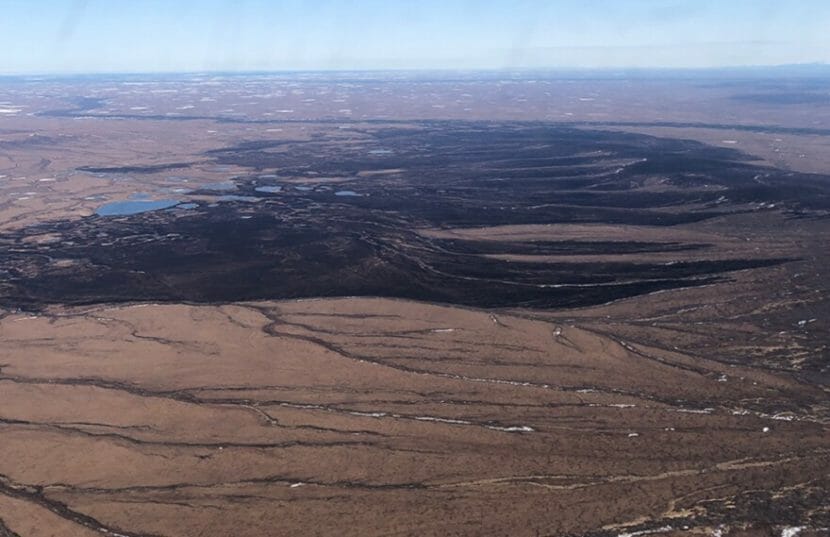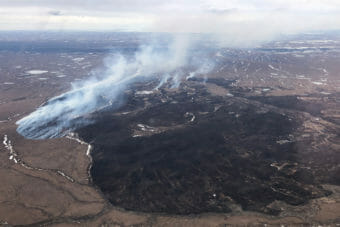
Alaska’s biggest April wildfire in 25 years might be done burning. Damage to the permafrost from the tundra fire is unlikely, but the local ecosystem could still see signs of disruption.
The Kwethluk Fire began burning on April 16 near the communities of Kwethluk, Bethel and Napakiak. The fire was around 650 acres the first day and grew to more than 10,000 acres over the course of 12 days. Now, the Alaska Division of Forestry says the fire has mostly burned out.
That’s according to the Alaska Division of Forestry. Pilot and firefighter Matt Snyder flew over the fire on April 26 and took infrared video showing it had died down considerably.
“The infrared is showing white hot, and that’s showing the solar radiation in the fire, not actual heat,” said Snyder
The video showed that there was no more smoke emitting from the fire. But Alaska Division of Forestry spokesperson Kale Casey said that doesn’t mean they can consider the fire completely extinguished just yet.
“We don’t want to play the game of calling it out. We know that it’s not moving. We know that it has no heat showing. But just like every other wildfire, is there a tiny bit of heat that might linger a few more days? Sure. Absolutely. That’s why we’re going to end up keeping an eye on it in the next couple of days in monitor status,” said Casey.
Climate specialist Rick Thoman said it’s Alaska’s largest April wildfire in 25 years.
Spring tundra fires in general are common. When the winter snow melts and exposes the brown vegetation on the tundra, that vegetation can quickly dry and ignite, sparking fires that can spread far and wide. But a large tundra fire this early is abnormal, according to Thoman. That’s because normally in April there is more snowpack, which prevents fires from starting or spreading.
Tundra and permafrost scientist J.J. Frost watched the Alaska Division of Forestry’s flyover video. Frost said that he has worked in the Y-K Delta over the years. He said that it is possible to see if there’s damage occurring from flyover video’s like Snyder’s, but he didn’t see any. Frost said that tundra fires are sometimes concerning because they can cause damage to the permafrost, but in the early spring they don’t burn deep enough to melt it.
Frost is concerned about something else, though.
“Lichens are not — they’re not tolerant of fire really at all,” said Frost.
He said that lichens take a long time to grow back, which can be a problem for animals who graze on lichen.
“There’s a potential the Mulchatna [Caribou] Herd might utilize that area. And so if those lichens are gone, that is a habitat impact for caribou in particular,” Frost said.
The Mulchatna Caribou Herd is already threatened. Its population size has dropped dramatically since the mid 1990s, hitting a low point of 12,850 animals in 2021. Hunting for the species has been extremely limited since, and closed entirely last year.
Frost said that early season tundra fires do offer some regeneration for non-lichen plants.
“That burn material is releasing nutrients that are going to be available for plants to take up later on in the summer. And potentially, in essence, fertilize them,” Frost said.
Frost said that we could see a lush tundra bloom in the early summer in the area where the fire burned.


